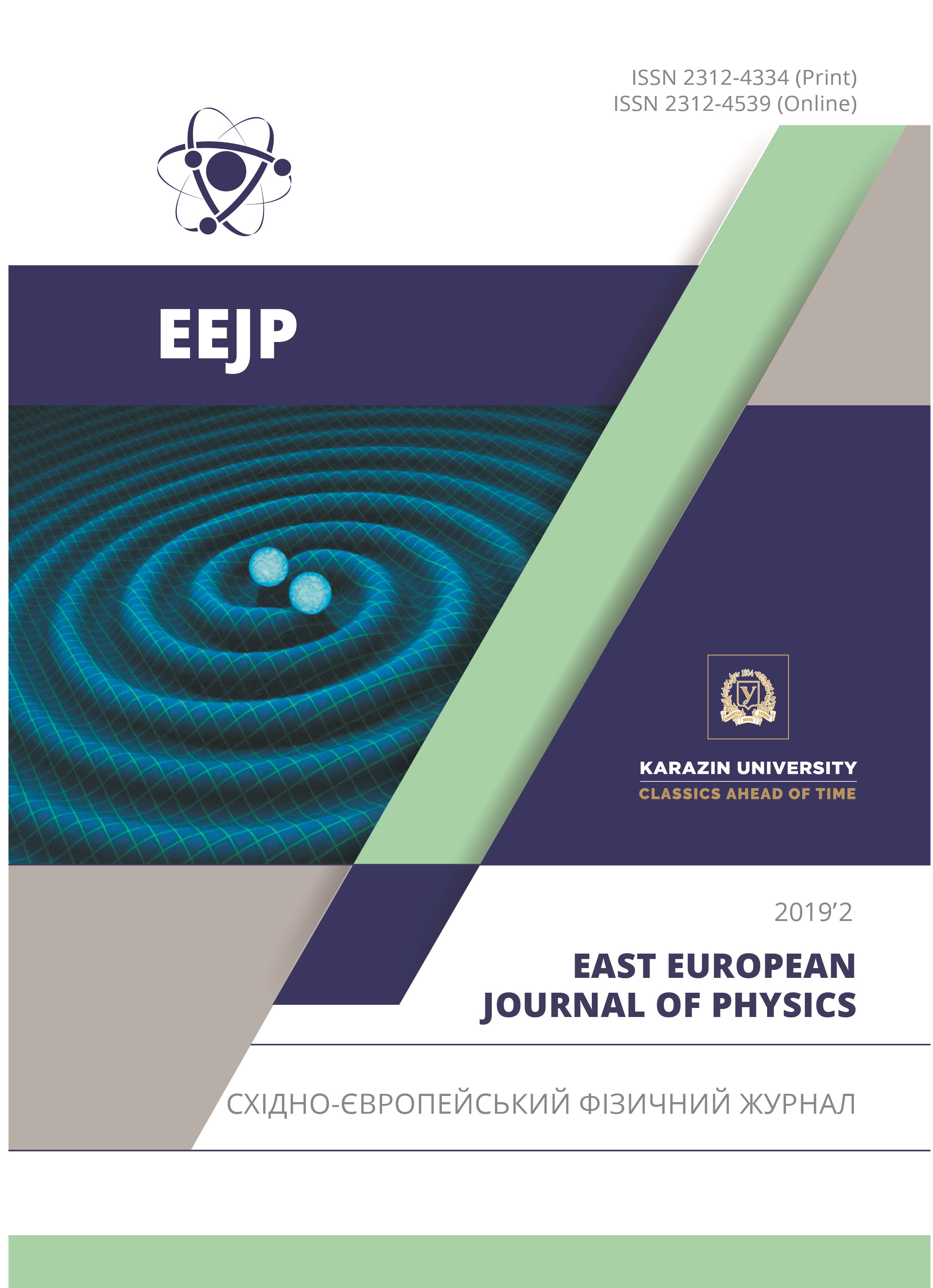Дослідження перспективних нанорозмірних ZrN/CrN багатошарових покриттів
Анотація
Науковий інтерес до дослідження нітридних композитів в якості захисних матеріалів в інструментальній та обробній промисловостях інтенсивно зростає. Хороша стійкість до окислення одношарових плівок CrN і висока температура плавлення, хороша хімічна і термічна стійкість ZrN є рушійними факторами для створення багатошарових композитів, в яких використовуються нітриди цих перехідних металів. Передбачувані переваги багатошарових покриттів в якості конструкційних матеріалів – це висока термостійкість, висока щільність їх структури і покращена твердість у порівнянні з системами нітрид-метал. Багатошарові покриття ZrN/CrN осаджувалися на сталеві підкладки AISI 321 за допомогою вакуумно-дугового пристрою, оснащеного двома металевими мішенями Cr і Zr високої чистоти. Структурні, хімічні та морфологічні характеристики, а також механічні властивості багатошарових композитів були проаналізовані за допомогою рентгенівської дифракції, растрової електронної мікроскопії, енергодисперсійної рентгенівської спектроскопії і твердоміра, оснащеного пірамідкою Віккерса. РЕМ-аналіз виявив збільшення шорсткості і концентрації крапель на поверхні покриттів, коли негативний потенціал зсуву знижувався до значення в -70 В. Результати даних, отриманих від рентгеноструктурного аналізу, показали, що найбільш інтенсивними є площини (200) і (111) для ZrN і Cr2N фази, відповідно. Положення піків ZrN були зміщені в бік менших кутів дифракції в порівнянні з об'ємними значеннями і вказували на зменшення міжплощинної відстані і формування стискаючих напружень. Розраховані значення напруження решітки в ZrN вище, ніж у CrN, що свідчить про більшу наявності дислокацій і дефектів в решітці ZrN. Усереднені розміри кристалітів в шарах ZrN і CrN становили 11-14 і 7-12 нм відповідно. Було встановлено, що максимальне значення мікротвердості по Віккерсу становить 6600HV0.01, що в 2,1 і 1,8 рази більше, ніж відповідні значення бінарних покриттів CrN і ZrN.
Завантаження
Посилання
D.M. Sanders, D.B. Boercker, and S. Falabella, IEEE Trans. Plasma Sci. 18, 883 (1990), https://doi.org/10.1109/27.61499.
O. Knotek, W.D. Münz, and T. Leyendecker, J. Vac. Sci. Technol. A Vacuum, Surfaces, Film. 5, 2173 (1987), https://doi.org/10.1116/1.574948.
H. Willmann, P.H. Mayrhofer, P.O.Å. Persson, A.E. Reiter, L. Hultman, and C. Mitterer, Scr. Mater. 54, 1847 (2006), https://doi.org/10.1016/j.scriptamat.2006.02.023.
H.C. Barshilia and K.S. Rajam, J. Mater. Res. 19, 3196 (2004), https://doi.org/10.1557/JMR.2004.0444.
A.P. Ehiasarian, P.E. Hovsepian, L. Hultman and U. Helmersson, Thin Solid Films. 457, 270 (2004), https://doi.org/10.1016/j.tsf.2003.11.113.
X.M. Xu, J. Wang, J. An, Y. Zhao and Q.Y. Zhang, Surf. Coatings Technol. 201, 5582 (2007), https://doi.org/10.1016/j.surfcoat.2006.07.132.
A.D. Pogrebnjak, Ya.O. Kravchenko, O.V. Bondar, B. Zhollybekov and A.I. Kupchishin, Prot. Met. Phys. Chem. Surfaces. 54, 240 (2018), https://doi.org/10.1134/S2070.
O.V. Maksakova, S. Simoẽs, A.D. Pogrebnjak, O.V. Bondar, Ya.O. Kravchenko, T.N. Koltunowicz and Zh.K. Shaimardanov, J. Alloys Compd. 776, 679 (2019), https://doi.org/10.1016/j.jallcom.2018.10.342.
D.M. Mattox, in: Deposition Technologies for Films and Coatings, edited by R.F. Bunshah (Noyes, Park Ridge, NJ, 1982), pp. 63-82.
M. Pohler, R. Franz, J. Ramm, P. Polcik and C. Mitterer, Surf. Coatings Technol. 206, 1454 (2011), https://doi.org/10.1016/j.surfcoat.2011.09.028.
C. Agashe, B.R. Marathe, M.G. Takwale and V.G. Bhide, Thin Solid Films. 164, 261 (1988), https://doi.org/10.1016/0040-6090(88)90146-0.
F.H. Chung and D.K. Smith, Industrial Applications of X-Ray Diffraction, 1st ed. (CRC Press, New York, 1999), p. 1024.
H.P. Klug and L.E. Alexander, X-Ray Diffraction Procedures for Polycrystalline and Amorphous Materials, 2nd ed. (John Wiley & Sons, New York, 1974), p. 960.
Автори, які публікуються у цьому журналі, погоджуються з наступними умовами:
- Автори залишають за собою право на авторство своєї роботи та передають журналу право першої публікації цієї роботи на умовах ліцензії Creative Commons Attribution License, котра дозволяє іншим особам вільно розповсюджувати опубліковану роботу з обов'язковим посиланням на авторів оригінальної роботи та першу публікацію роботи у цьому журналі.
- Автори мають право укладати самостійні додаткові угоди щодо неексклюзивного розповсюдження роботи у тому вигляді, в якому вона була опублікована цим журналом (наприклад, розміщувати роботу в електронному сховищі установи або публікувати у складі монографії), за умови збереження посилання на першу публікацію роботи у цьому журналі.
- Політика журналу дозволяє і заохочує розміщення авторами в мережі Інтернет (наприклад, у сховищах установ або на особистих веб-сайтах) рукопису роботи, як до подання цього рукопису до редакції, так і під час його редакційного опрацювання, оскільки це сприяє виникненню продуктивної наукової дискусії та позитивно позначається на оперативності та динаміці цитування опублікованої роботи (див. The Effect of Open Access).








